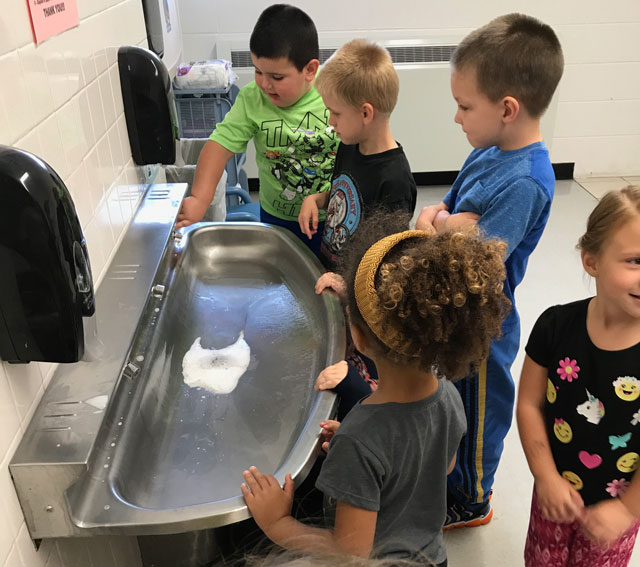As teachers, we often hope that working in projects will provide opportunities for every child in our class to feel ownership and take initiative in a class project. However, we sometimes lack confidence about how to get these kinds of things to happen. Following are some suggestions for possible ways to help children take initiative in various aspects of a project.
It is helpful to select a topic that children can investigate without assistance from adults. When deciding on a project topic, ask yourself, “Are direct experiences with it accessible? Can the children touch it, manipulate it, pretend about it, measure or count aspects of it?” If the topic is an abstract idea or theme, such as “transportation” or “friendship,” children are less likely to know how to investigate it on their own.
When a child is not used to taking initiative, consider offering prompts. For example, if the class is investigating insects from the playground, you might suggest to a child that she take a container to the playground and search for insects to add to the habitat in the science area. By acknowledging the child’s efforts, you can increase the likelihood that she will take the initiative in the future.
In addition to asking the children what they want to find out about a topic, consider asking them “how” they would like to find out. What materials do they think would help? Who will they ask for advice?

Sallee Beneke
Sallee (BenekeSalleeJ@sau.edu) is Professor and Director of Graduate Programs in ECE at St Ambrose University, Iowa. She coauthored The Project Approach for All Learners (2019) with Michaelene Ostrosky and Lilian Katz. Sallee used the Project Approach as a teacher and has worked to build the implementation of the approach via training and consulting. Sallee co-founded the IEL Project Approach Web site, and Facebook page with Lilian Katz, and she continues to contribute to the site.
Biography current as of 2021


